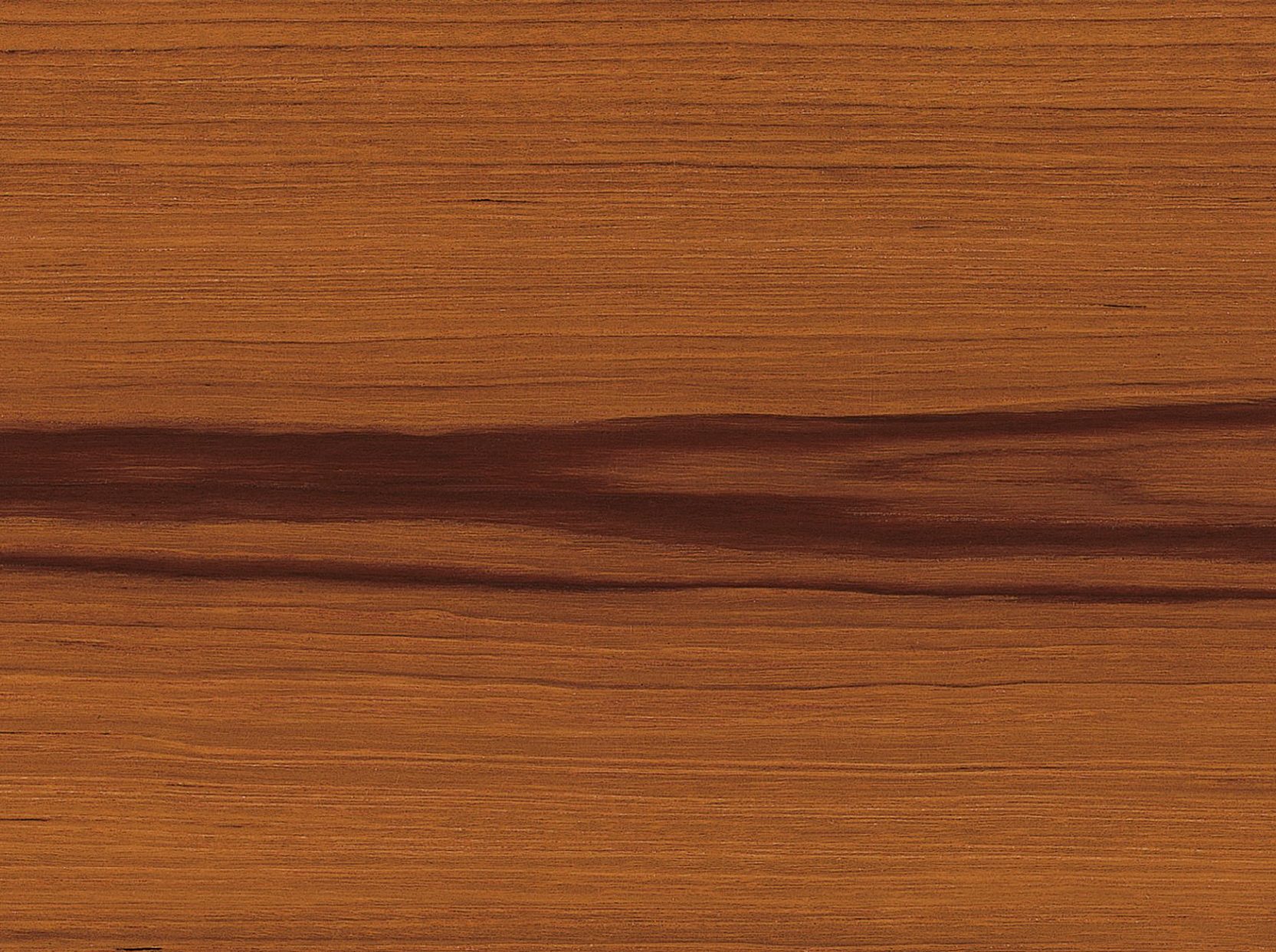
Teak
Tectona grandis

Handelsname
Teak
Ursprungsland
Südostasien
Vorkommen
Vorkommen von Indien über Burma bis Thailand und Vietnam. Bekannteste Herkunftsländer für hochwertiges Rundholz sind Burma und Thailand. Aufgrund der starken Nachfrage in den 60er, 70er und 80er Jahren starke Übernutzung der Waldbestände, so dass heute die Qualitäten stark zurückgegangen sind. Exakte Sortierungen durch staatliche Verkaufspolitik, speziell in Burma. Heute oft auch in Plantagen angepflanzt, qualitativ fragwürdig.
Verwendung
Teak zählt zu den ältesten Gebrauchshölzern. Aufgrund der Beständigkeit gegen Pilz- und Insektenbefall ideales Schiffsbauholz. Hochwertiges Möbelholz für Innenausbau und Serienmöbelproduktion, das in den 80er und 90er Jahren in Mitteleuropa aus der Mode gekommen ist. In Skandinavien nach wie vor beliebtes Möbelholz.
Eigenschaften
Man unterscheidet im Furniersektor den "Golden Teak" und den gestreiften Teak. Das Holz hat eine leicht ölige Oberfläche.
Verarbeitung
Grundsätzlich bereitet die Bearbeitung von Teakholz keine Schwierigkeiten. Mineralische Bestandteile im Holz stumpfen jedoch die Werkzeuge stark ab. Beim Einsatz von hartmetallbestückten Werkzeugen können sehr glatte Oberflächen erzielt werden.
Trocknung
Die Trocknung sollte langsam und schonend durchgeführt werden, bereitet aber im Besonderen keine Schwierigkeiten. Es besteht keine Tendenz zum Reißen und Werfen.
Oberfläche
Zur Oberflächenbehandlung von Teak sollten Spezialmittel zur Anwendung kommen. Die gründlich auszubürstende Oberfläche behandelt man am besten im Innenausbau mit Ölpräparaten und im Außenbereich mit Lasuren.
Verleimung
Aufgrund des Ölgehaltes ist die Verleimung schwieriger. Schraub- und Nagelverbindungen halten fest.

